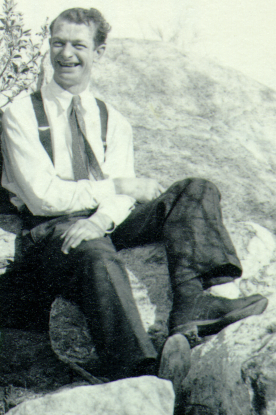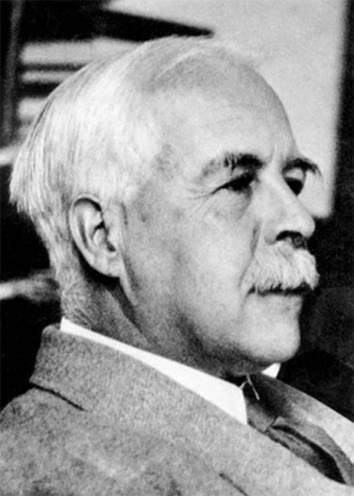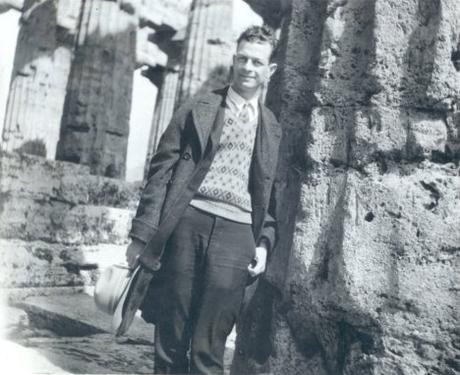
Linus Pauling, 1931.
[An examination of Linus Pauling’s first paper on the nature of the chemical bond, published in April 1931. This is part 1 of 2.]
“It seems to me that I have introduced into my work on the chemical bond a way of thinking that might not have been introduced by anyone else, at least not for quite a while. I suppose that the complex of ideas that I originated in the period of around 1928 to 1933 – and 1931 was probably my most important paper – has had the greatest impact on chemistry.”
-Linus Pauling, 1977
One of the major film documentaries chronicling Linus Pauling’s life was produced for the long-running NOVA series in 1977. By that point, when asked to look back over the decades of significant work that he had done, Pauling still singled out his insights into the chemical bond as being his most significant contribution to chemistry.
Pauling’s initial 1931 paper in particular marked the first time that he published his revolutionary point of view related to the chemical bond, and reflecting on that period Pauling went so far as to call the article “the best work I’ve ever done.” Indeed, the paper marked the first instance in which Pauling began to spell out the ways in which the burgeoning field of quantum mechanics might be applied to fundamental questions in chemistry. And though first in a lengthy series, Pauling placed major significance on this one paper because it profoundly changed the course of his career and set into motion a period of heavy influenced on the trajectory of an entire discipline.

G.N. Lewis, ca. 1930.
While an undergraduate at Oregon Agricultural College, Pauling had been taught – and went on to teach his own students – the “hooks and eyes” theory of chemical bonding. In this model, each atom was presumed to have a certain number of hooks or eyes that determined how and to what other atoms it could connect. Though it prevailed at the time, the model was deemed to be outdated and insufficient by many of Pauling’s contemporaries, some of whom were concurrently searching for a more satisfactory replacement.
That said, “hooks and eyes” did serve as a useful precursor to the later concept of valence, because it correctly assumed that each atom possessed a concrete number of electrons to contribute to the formation of bonds with other atoms. The theory also suggested that there were rules governing how chemical bonds worked and how likely it was that two or more atoms might form a bond.
While Pauling was still a student in Oregon, he avidly read G.N. Lewis’ ideas about electron structure and also studied Irving Langmuir’s theory of valence, a tutelage that helped propel his own nascent interest in chemical bonding and atomic structure. Lewis proved to be particularly important. A chemist at the University of California, Berkeley and a future mentor of Paulnig’s, Lewis proposed that eight electrons provided a maximally stable environment for a molecule, a tenet known today as the octet rule. Working from this idea, Lewis hypothesized that an atom containing, for example, seven electrons would bond more readily with an atom containing nine electrons, and that the bond that was formed consisted of the electron shared between the two atoms.
Lewis wasn’t the first to chase the nature of the chemical bond. Indeed, the problem had been under attack for a few decades. In 1911, Ernest Rutherford created the first modern atomic model, but ran into trouble because it wasn’t compatible with classical physics. Niels Bohr then updated this model. Less than twenty years after J. J. Thompson had discovered the electron, Bohr suggested that electrons orbited the nucleus in a predictable way, emitting quanta when they moved into lower orbits.

Arnold Sommerfeld, 1928.
From there, others sought to fill gaps in Bohr’s model. In 1915, Arnold Sommerfeld, a physicist with whom Pauling eventually worked, helped to devise what came to be known as the Sommerfeld-Wilson quantization rules. These guidelines provided an explanation for angular momentum by describing electron orbits as ellipses rather than perfect circles.
At the same time, Werner Heisenberg, Erwin Schrödinger and Max Planck (among others) were rapidly embracing a new way to look at physics, expanding the theory and mathematics behind involved in this innovative approach. In 1925, a year before Pauling began an influential trip to Europe, Heisenberg had authored his “Quantum Theoretical Reinterpretation of Kinematic and Mechanical Relations,” which many point to as the true beginning of quantum mechanics. Schrödinger then completed his wave function in 1926. By contrast, the Lewis and Langmuir models were part of an old system that – as soon Pauling discovered – was in the process of being discarded.

Linus Pauling at the Temple of Neptune, Paestum, Italy, during his legendary Guggenheim trip to Europe. This photo was taken by Ava Helen in April 1926.
I think that it is very interesting that one can see the [psi] functions of Schrödinger’s wave mechanics by means of the X-ray study of crystals. This work should be continued experimentally. I believe that much information regarding the nature of the chemical bond will result from it.
These thoughts proved prophetic, as we will see in part 2 of this series.
Pauling returned to Pasadena in the fall of 1927, bursting with new ideas. While he was away, Caltech chemistry chief A.A. Noyes had sent word that a unique position had been created for his promising young faculty member, one that lined up nicely with Pauling’s new interests. Upon his re-arrival at Caltech, Pauling was to begin working under the title of Assistant Professor of Theoretical Chemistry and Mathematical Physics.
Although Noyes eventually dropped the physics course from the appointment, Pauling liked the idea of hybridizing his interests into one name. It was at that point that he began referring to himself as a quantum chemist.
Advertisements